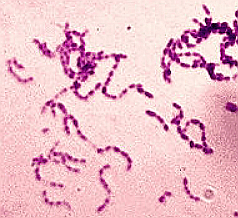 Most of us are familiar with xylitol because the label on our chewing gum boasts it is sugar-free¹, using xylitol in its place.
Most of us are familiar with xylitol because the label on our chewing gum boasts it is sugar-free¹, using xylitol in its place.
This so-called artificial sweetener is prepared industrially by the catalytic hydrogenation of xylose. Xylose itself is a sugar. It may be isolated from wood. Xylitol is not decomposed in the mouth by bacteria. It is not well-absorbed in the small intestine. Hence, it is less of a threat to the diabetic and does not add to the dentist’s paycheck.
In the Mouth

In a person’s mouth, Streptococcus mutans bacteria consumes reactive sugar (usually sucrose or table sugar), releasing in its place, carboxylic acids. Over time, the acid environment damages teeth.
Xylitol is not a reactive sugar, meaning the acids are not produced to cause damage. Current research seems to suggest it not only not does not cause cavities, but it is actually beneficial. How so?
Bacteria consume the sugar-alcohol to convert it to energy. But the conversion process is doomed! The bacteria have to dispose of the partly processed sugar. The bacteria have used energy to get to this point, so, in effect, they go hungry as they lose energy, leading to their death.
Is Xylitol a Cure-All?
As useful and even helpful as it is, xylitol is by no means a cure-all. In larger quantities, it can sicken people, producing a laxative effect. Dogs can be seriously harmed or die if they eat it.
¹ Generally referring to the replacement of natural sugar found in foods with artificial sweeteners, which can include sugar-alcohols such as xylitol.
Note: You might also enjoy Carbs or Carbohydrates – What are They?
References:
- Science Direct: Carbohydrate Basics: Sugars, Starches and Fibers in Foods and Health by J. Marcus
- NIH: The effect of xylitol on dental caries and oral flora, by P.A. Nayak, et. al.
- Science Direct: Catalysis Today: Xylitol: A review on the progress and challenges of its production by chemical route
- iMedPub Journals: Continuous-Flow Hydrogenation of D-Xylose with Bimetallic Ruthenium Catalysts on Micrometric Alumina
- VCA Hospitals: Xylitol Toxicity in Dogs
← Back to QuirkyScience Nuggets
← Home
